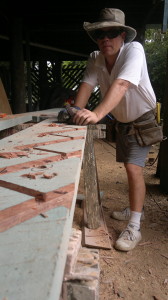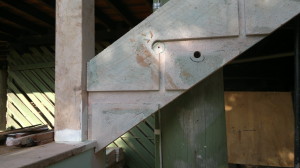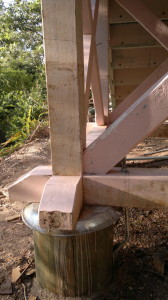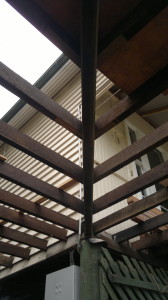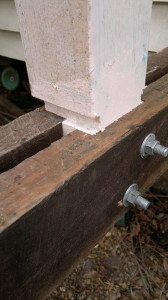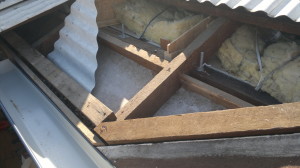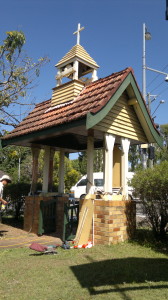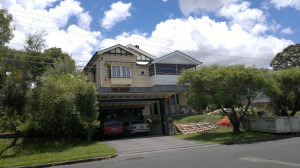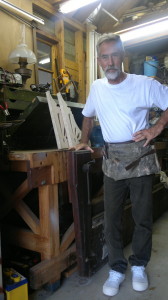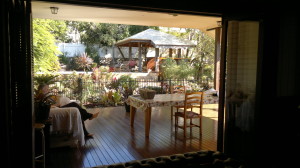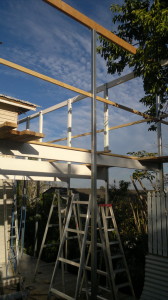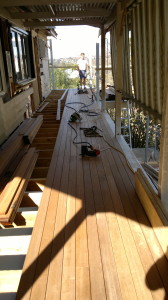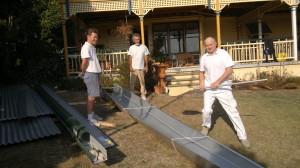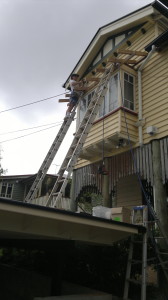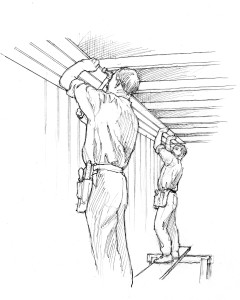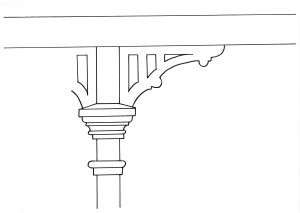MEMORIES
I was sure, when I was a little boy, that I could remember a time when I was in the big old pram with a fringed sunshade. The fringe undulating in any breeze, the pram parked on the tiny patch of daisy-speckled grass called the ‘front lawn’. I remembered that fringe and its movement, though my mother said that was impossible.
It was a big house, rented, that held us. Mum and Dad, Gran, big Sister, and an occasional pet. I said I was born there, 80, Mount Pleasant Road, Wallasey, but actually it was in the hospital at Liscard; not far away.
The environment of a little boy expands exponentially as the years pass, but in the beginning was only the house and two gardens: front and back. Semi-detached, as were they all in the mostly land-locked estate. My first twelve years were spent there.
There was no access for any vehicle, even a motorbike had to mount the kerb and squeeze between the houses to the back gate: once inside, turning around was a back-and-forth struggle.
I was forever irrationally in fear of that house, except when everyone was home, or there were visiting convivial rellies. There was a long flight of lighthouse-like stairs leading to an attic, where I braved my terror with a beating heart, to run back down to the safety of the kitchen below. There was an immense drop from that attic landing, down the huge open stair-well, and in the room three low doors opened onto the black-dark roof space, the source of my fear, for it was there that the headless, armless, legless body lay. My parents knew of my fear, and its cause, for I had explained, and they wondered at my imagination, but years later some repairs to the cistern in the loft brought light into the dark recesses, and revealed a filthy, debris-covered dressmaker’s dummy in a corner, jammed under the roof-pitch. I remember the amazed call of my father, to see this artifact, the cause of my years of terror. The first sight of it renewed my horror, until it was pulled out and its purpose demonstrated. My sister Doreen later cleaned and used it: her size exactly! But the mystery remains: how did I know that limbless corpse was there?
One small window in the attic looked out to the neighbour’s roof and chimneys, and down the chasm between, but one day my mother said, look, you can see the sea from here. There, by leaning out and sideways, braving the chasm, could be seen a small yellow strip of beach at Leasowe and the Irish Sea: a view I often gazed at in fascination. A strange child.
So, the front garden and its lawn. I suppose it was twenty feet square, and seemed ten times as big, hedged on three sides with dwarf privet which occasionally grew beautiful aromatic racemes of cream flowers, but needed constant clipping with wooden-handled shears. (A note from the distant future in Queensland, Australia, the discovery of the insidious Tree Privet at my place, a plant which, unbeknown to Australians, will one day obliterate all the land, the farms, the bush, and the suburbs. It may take a few generations, and right now it could be stopped but won’t, and our time will be known as a criminal neglect of the environment. So what’s new?)
A gate with Number 80, a path with tiled edging to the front porch, and castor-oil plant under the bay window of the lounge; the frontage of our house and all the neighbours’, of sooty grey pebble-dash. The lawn, smaller than most carpets, and its lovely seasonal daisies, was mowed with a cast-iron push-mower, the cylinder of blades free-wheeling after each forward surge, with a noise forever associated with the English Summer, the metallic whirr repeated across hundreds of lawns like steel cicadas.
To the left of the front yard was the shared narrow canyon between the semis; indeed the three storeys of brickwork towered skyward. Mr. and Mrs. Duckworth and their daughter had the back gate on the left at the end. Old Mr. and Mrs Boston lived on the other side, our two front doors separated by one column. We seldom saw them, both being shy and very reclusive. Mr. Duckworth was fun to me; our contact discovered, my parents banned future visits. But he had the tools I desperately needed for all my projects, and was willing to share and help, and I saw no ulterior motive ever: a kindly man who would have liked a son, and who had an outrageous and evil habit or two. My father was, for a draughting engineer and future works manager, very impractical: he had no tools of any sort. Our neighbour had the tools and the advice and occasional materials, and certainly wasn’t a deviant character: as I said, kindly. Ah; a fine line, to be observed with open-minded caution; as kids we discovered plenty of rather gentle homosexual men, destroyed by war, and suffering a lonely, shell-shocked peace.
The daughter, Miss Duckworth, as a young teenager, had a strange affliction, and a limp. The medical industry in the 1950s was primitive, and with slowly-emerging technology she was x-rayed with the new equipment, revealing a dislocation of the hip-joint which had apparently happened two years prior. Her leg was in the process of creating a new socket in her pelvis. Two years with a dislocated hip and no memory of the event that caused it! Within a few days she was back to normal; amazing.
Mr. Duckworth showed me one of his secrets, to my startled fascination. All the neighbours had trouble with roaming cats. Our dungeon-like outside wash-house, toilet and coal-shed stank of catshit. Catshit everywhere: to go there after dark was asking to return with shoes caked with unutterable filth. Hosing-out once a day had no effect.
Our back gardens were all separated by eight-foot high brick walls; cosy wind-breaks with sunny corners, but cat-highways. On top his wall my adult neighbour had fixed two copper plates wired to the mains, and a switch and lookout-chair at his back bedroom window.
Before my parents sadly and mysteriously banned visits, we watched patiently for hours, it seemed, to spring the trap; staring each way up and down the endless wall, waiting for stinking pussy. Once, only was the switch thrown. A cat! Approaching with unhesitant curiosity, sniffs at the metal, steps cautiously on one plate, then the other, then: The Switch! No sound; the cat leaps and falls into the opposite yard. Was it dead? We didn’t know, but they kept coming, and our wash-houses kept stinking. Mr Duckworth unplugget the device, the wall was safe again.
I used that wall for my own highway later, balancing easily on the wide bricks as I took short-cuts to the three surrounding roads, ignoring irate neighbours. Amazing what could be seen in folks’ back yards.
Just down from our house, at the corner of Elm Park road, was a posh place with a young family. Becoming more gregarious at the age of seven or so, I knocked on their door to enquire whether anyone would come out and play with us. My offer was politely rebuffed, though I was watched from inside by two children my age, which I found strange and rather disturbing; why wouldn’t they come out and play?
My parents were rather shocked that I had called at the Jewish house. They won’t mingle, said my father, and was rather worried and annoyed that I had been so forward. To this day I wonder at the isolation attitude. There seemed to be a great mystery concerning Jews; romantic outsiders who lived and looked like the rest of us, yet were apart, embedded aliens. Strange how tribal history can create non-existent difference: genetically we’re all identical, Jews and Palestinians alike, and little boys from Wallasey
It was a cautious revelation to find other children lived nearby. Before my venture to the Jewish house, at the age of four or so there was the hesitant, innocent discovery of Babette and Richard Black in a grand house opposite, Kevin O’Toole nearby, and Stewart Robertson up the road a bit: all within a hundred yards. Those first meetings were never to be forgotten. I wonder if they remember me?
Very young children wandered around the streets then. Exploring, discovering friends and curiosities with complete freedom, talking to anyone, young or old. No fear, no guilt, no hovering parents. Yet there were deviants abroad then as now; just no fear: parents and children took their chances. I wonder how the conversation would have gone had someone suggested fear of freedom? Once, at about yes, four years old, my mother asked me to get a loaf of bread from the bakers up the road. On the way back I idly chewed off the corners, which stuck out of the thin wrapping-tissue. I was shocked at the anger this caused. Even younger, crawling, I have another shock memory; I was near the front door, Mum was also on her hands and knees at the other end of the hall, with a dustpan and brush; what did I do? What did I say? Something I did triggered sudden anger and the brush was hurled at me to crash against the door. It missed, but the shock has stayed, over seventy years later.
I think I understand, now. I was, like most in those days, an accidental baby, and certainly unwanted at first. My sister was nearly ten years older than me. Ten years: then the sudden burden of unexpected, life-interrupting pregnancy. No wonder my mother was pissed off. But it was just that once She would have been horrified that I remembered: a lesson in parenting.
Another shock, literally, to all concerned, occurred in the kitchen, under the hinge-out little work table. There was a power-point on the skirting for the iron. I was crawling, playing with a piece of wire, which I had bent into a U-shape, and was inserting into the socket. Bang! Really it was a huge explosion; I was thrown back, unhurt, all the family were in the kitchen at the time: consternation and real shock. What a stupid child. That sort of memory lasts forever, from tiny crawling babyhood until the end.
Kevin O’Toole, two doors down, was younger than us, very Irish, and his father insisted we included him in our games. He was a menace. If there was a ball involved, he would kick or throw it down the hill and laugh at our annoyance, as all play stopped to retrieve it from miles away. The street often echoed with the father’s yells for or at his son: Kevun, Kevun!
Directly across from our house was a grand mansion in a huge rambling garden, surrounded by the ubiquitous high sandstone walls with pointed capping. At least, writing now, that is my memory. It must have been the classic introduction; we lost our ball in the undergrowth and knocked on the door for permission to search.
Old Mrs. Gould was a treasure. Alone in her huge house she was always so pleased to see us when we called to ask if we could play. Our game was always ‘Block-one-two-three’. A garden seat was the base, and a coin was tossed for who was first to be ‘it’. ‘It’ would count loudly to a hundred, eyes covered, so we could all hear whilst we hid. At a hundred we would watch from our hiding-places for an opportunity to touch base while ‘it’ was searching, hopefully without being seen. Once base was touched we were ‘safe’, and could help catch the others. Anyone caught away from base was the next ‘it’.
Mrs. Gould must have been keeping a eye on us, for at the change of ‘it’ she would call us in for lemonade or orange juice, cakes and biscuits. What a lovely thing to do for the neighbourhood kids. She would show us around her fine old house with its wainscots and paneling, and huge moulded ceilings. I wonder now what I might think of the place, not seen for seventy years. Is it still there? Flats, maybe, or demolished.
I remember bare rooms in our house; no carpets or furniture in the so-called dining and lounge, and a primitive table and chairs in the kitchen. There was one old leather couch lonely in the dining room, its back peppered with shrapnel from a German bomb. The couch had been in a previous rental flat nearby, before I was born, and had been placed against french doors as a precaution against that very event. Many years later, when the old couch, called ‘the settee’, was finally scrapped, I cut off a piece of the leather to cover my old clarinet case, which I still have: an artifact of a distant me.
One early birthday I was given a very old little tricycle, which I rode in endless clockwise circles on the bare boards of that dining room: it was years before any furniture filled it, and even later for the lounge, called ‘the front room’. Eventually outdoors, I found it difficult to steer anti-clockwise, or widdershins. Much later, my cousin’s bicycle became a birthday present of fear and pathetic frustration.
As time passed the house became more sociable as the parents established small incomes, and with that furniture, carpets, crockery and a full pantry: a small, high, tiled cubicle with shelves to the ceiling and a tiled benchtop. Suddenly relatives and neighbours appeared for ceremonious christmasses, new years, and first-footing, with many superstitions imported from Geordie homelands.
When I was perhaps three years old Mum’s sister Flo, husband uncle Alan and son Gordon also made the trip west from Geordieland, and rented a flat down the road from us, opposite Captain’s Pit. I remember little about the place except stairs and lovely visits. My parents and I would walk down to spend the evening with them, and I would, as usual, be put to bed there on arrival. But then later, I would be woken, and picked up, and carried back home by my father, through the starlight and quiet street, and the moon would be pointed out, and the Plough, and Orion’s Belt. There was a loving good humour, a aura of peace on those night-time walks in Dad’s arms. I suspect the parents were gently pissed, as every adult seemed to be on social occasions. And why not?
Before and during these gatherings I was sent to bed, and was comforted by distant sounds of singing and laughter, the front door continually opening and closing on visitors .It seems my presence would be an annoyance to family celebration. But if they were happy, I was happy, if excluded.
During this childhood the grandmother, mother’s mother, was a background of mysterious illness and confinement to bedroom, from whence came awful asthmatic wheezing and coughing. By the time I could associate with my grandmother she was no longer a free agent with her friends and full social life. My father struggled with the anchor of her existence in ‘our’ house, though I suspect her finances paid the rent for years. I was a nasty rude boy to her, perhaps feeding off my father’s irritation, until one strange day, when I suddenly thought to myself how horrible I was to my old granny, and instantly swapped character to a kind, helpful grandson. I wonder if anyone noticed? From that moment I tried to make up for years of obnoxious behaviour. Perhaps the father had his frustrations. I remember clearly a very loud, angry shout from him, echoing down the stairs to Mum: “your bloody mother’s left a blummin great jerry in the toilet again Molly”. I ran to look, and yes, a giant un-flushable turd reared out of the bowl like a submarine, which Dad broke up with a stick before it would disappear.
The asthma killed my granny, and also aflicted me badly, on and off for twenty years. There was a period of another illness where I only have a memory of strange bed-ridden delirium, and hushed visits from the doctor. I have no idea how long that lasted, or what it was, but I must have been away from primary school for many months, and frightened the shit out of my poor parents. I remember only strange oppressive feelings of the space in my little bedroom closing on me, and being transfixed in bed, unable to move. As if an invisible suffocating balloon was expanding, filling the room and pinning me down. If I lay supine and frozen I could avoid its threat, though I seemed to drift in and out of reality. Whatever it was, it ended, and I lived. Mysteriously, forty years later, on stage with the band, in mid-performance, I experienced just a slight and ephemeral memory of that feeling; the first and only time since the illness.
A further shock to my poor parents was the discovery that I was savagely allergic to fish: a frequent family dish. The problem was the delayed action of the allergy; perhaps an hour or two after eating. I liked fish, but oh, then my throat would start swelling, breathing and swallowing became so difficult, my face would also bloat and redden. Altogether most oppressive for me and probably worse for the parents. Only after many occurrences was the connection made: no more fish for Andrew.
Meanwhile, there is the tiny back garden, my playground. Although much space was taken up with the stinking outhouse, there was room for another tiny lawn, and a veggie-patch at the back of the laundry. I had an early attack of conservation caused by that disgusting little building, which comprised a coal-shed, toilet, and wash-house with copper and work-bench. I seemed offended by the filth, and emptied the toilet of all its rotting wet sacks, rags, newspapers and cat-stink; scrubbed and hosed-out the entire room, and fixed the cistern, its leak, and operation. This at the age of six; an early sign of the urge to restore and fight dilapidation. (Futile, in a universe tending to entropy).
That little garden with its seven-foot enclosing walls was a lovely sun-trap; the bricks absorbing the weak northern sunshine and radiating heat into the yard. Clockwise from the back door, alongside the outhouse, was a bed of tiger lilies and lily-of-the-valley, then the empty patch on which Dad later erected a very second-hand wooden greenhouse. This patch had a low wall which dropped the seven feet to Mr Duckworth’s garden, as our houses descended the hill. Under the far wall, rhubarb, then loganberries, goosberries, the corner, then roses, sweet-williams, pansies, wild tropaeoleum we called nasturtiums (nasturtium is watercress: a real mix-up by simple folk who eat both as one), and at the end, back at the house, a lilac tree and tiny rockery, and steps up to a concrete area outside the dining-room french doors. Really a little paradise for a toddler.
All this garden was the work of some previous tenant or owner. Generally, as a planter of virgin soil, I have only recently inherited someone else’s hard work: an old garden of massive trees and delightful discovery. I give thanks to the planters who give joy to future inhabitants.
I have a distinct memory of sitting on a little seat made of two bricks and a piece of wood, nestled amongst the rhubarb leaves, with my back against the warm wall, playing with many different paper planes made by my Dad. Some five years later I took over that garden; digging, mowing, weeding and planting, and cutting the edge of the lawn to a string-line with a sharp spade. Very neat. Again, that urge to restore.
Dad’s new-old greenhouse was assembled, I remember, with difficulty. All the old glass had to be made to fit and puttied, and many new panes bought to replace the missing, but we both loved the strange green and warm ambience, and the powering aromatic tomato plants in tin cans. Later, a mystery. Dad fumigated the greenhouse. The tomatoes were full of good fruit ready for picking, but this smoke-bomb was lit which filled the little house with opaque whiteness and killed all the tomatoes. Nevertheless, we ate all the toms, toxic or not.
Slowly, I was growing out of the house and garden, my nursery and cocoon. There were children neighbours, and a road up the hill outside, from Liscard to New Brighton, and a whole suburb to be explored gradually: no walls or fences between me and the entire planet, which later I took advantage of. But then, our neighbours and the road for a hundred yards was sufficient, until the day arrived when I went to primary school at the age of four-and-a-half. Except for the first day, I walked the four miles there and back on my own.
Mount Pleasant road, Mrs. Gould’s, and Richard Black’s house opposite were our playgrounds. Richard’s garden was full of neglected fruit trees which I fed off in season: no-one else was interested in the free apples and pears and gooseberries, strangely. Between our front yard and the road was a strip of land with trees, a low sandstone wall by the road which made parking impossible, and a wide pavement with gas-lamps. A paved area in front of our house gave access to the road, and had two long park-benches. One day I was balancing on the top of the back-rest, tightrope walking, when someone pushed the seat, making me fall, to hit my head and lose consciousness and blood. To this day I wonder if I ever really recovered. A bad memory, and another, when local young thugs of the same ilk stoned the owls which roosted in the holm-oaks overhanging those seats, driving them away for ever.
That strip of land up hill from our house was all sycamores; opposite and downhill were young hollies, with some larger ones. The holm-oaks in between, and at the Elm Park road junction a beautiful, massive copper beech. In the humus under the hollies I pulled out old spikey leaves with all substance rotted, leaving a fine network of veins within the spikes. At Christmas we raided the hollies for bunches of berries to decorate the house. I queried the usefulness of the berries, for, despite folk-lore, birds never seemed to touch them.
My tiny front bedroom, with its little bay window, looked out on the hollies, and there was a winter event never forgotten: the first sight of snow ever seen by a young person. One morning the room was strangely lit; brightness on the ceiling and walls, the window-panes opaque with ferns of frost inside from my night-breath, and beyond, all gleaming whiteness. A hot penny melted a peep-hole on the glass, through which I saw a wonderful view of pristine landscape. Snow and frost, at the same time; marvellous.
Although somewhat house-bound by youth, this first snowscape was fascinating to a small person; the strange quiet, all life muffled, the beautiful cleanliness and obliterating gleaming whiteness of the usual outdoor features. Every hedge piled with a pure capping of snow, the trees, the footpath, the road utterly new-white and mysteriously silent; no wind, flakes falling softly from the low, dark sky. Tentative first steps on the soft pristine cold carpet, either powder-crisp or soft-damp, was a wonderful experience. To look upwards into the softest of falling flakes, boundless, no edges or beginning, just the movement downwards to my face! Mysterious and peaceful and gently icy. Then, in a year or two, the full enjoyment of exploration, and sledging, and snowballs and snowmen, and the trick of rolling a certain texture of snow like a carpet, forming a cylinder suitable for a snowman: the more you rolled, the bigger and heavier your cylinder became. But with the variability of our climate, that series of white Christmasses came to an end, replaced by occasional slush and freak brief snowstorms in March.
But that series of beautiful winters were a joy to the little schoolboy, who towed his satchel on a tiny home-made sledge, making the distance to school and back a challenge; the downhill speed, the uphill trudge, the fun of joining friends on the way. One winter, a remarkable and unexpected present: a classic Swiss toboggan of fine craftsmanship. It could seat two small people, or carry any load, but the snow had to be perfect, and I found, disappointingly, that my tiny old sledge was faster and lighter, the winter fore-runner of the now-ubiquitous scooter. That tiny sledge could be carried in one hand, and permit a running jump on a downhill slope, supporting just chest and hips, and could be steered like a modern surfboard, and do three-sixties on an icy surface. Portland Street in New Brighton was and is the steepest. It had the advantage of both being seldom used by traffic, and leveled-out at the bottom, to the promenade; perfect for sledging, and after school a crowd of fifty kids would be in constant motion there, trudging up one side and flying down the road. The surface became glassy, and the ice-track lengthened across the level to the promenade. All this snow-experience took place in darkness lit only by street-lamps; the winter days in the north of England are short; when school finished at four o’clock the gloom was already descending and within half an hour there was night in snow-weather.
One year on Portland Street a broken hip, one year, a farcical attempt by the council to destroy our fun. A truck containing crushed rock-salt, used to keep main roads ice-free, arrived at the top of Portland Street, four blokes with shovels in the back, spreading salt. Crazily, it turned onto our sled-run and immediately became a free-sliding juggernaut, the four men terrified and gripping the tail-gate. It hit the bottom sideways-on and slowly spun for a further hundred yards. We had won. The boos turned to frantic cheers. There was no return of authority.
Meanwhile, the bicycle. It belonged to my cousin Gordon Calvert, and as usual in the days of poverty, it had been re-cycled, ha ha, into my possession. It was my birthday, July the Twelfth, mid-summer, perhaps age ten. Being a pathetic, fearful child, I couldn’t ride it. I’d had it for a week, and couldn’t ride it. My brain told me it was obviously impossible to support a load on two points: three, yes. I saw folk riding on two wheels, but that was magic I didn’t have. My birthday friends and I went to the park, me pushing the polished and treasured bike. An older, bigger, obnoxious ‘friend’ grabbed the bike from me in the street and rode off laughing and returned after too long, at speed. He hit the curb next to us, went over the handlebars, wrecked the front wheel and his face, which was only fair. His parents had to be called to pick up their obnoxious, screaming son. Meanwhile, alone with my bike for which Dad got a new wheel, weeks of effort and paralysing fear resulted in some small two-wheel ability, in the park, on soft grass, for I couldn’t stop or start properly, but could grasp the possibility of motion. Falling down carefully to stop, and disbelieving wobbly starts eventually gave me the courage to take the circus act onto the public road, though on arriving home I would calculate the best place to fall. Soon after, I’d stop at a vertical surface to lean against, then finally, success, stopping and putting my feet on the ground. Since that day two wheels have been my pleasure, motorised and leg-powered.
The years at Mt. Pleasant Road are packed with formative memories, from birth, to primary school, to grammar school and the start of puberty. So much happened in that short span. Since then, time accelerated detrimentally, memories blurred, there were vast changes year after year for decades, and even now time is racing past as I sit in the garden day-dreaming. But back to the haven of my birth-home.
Gran died. I remember little about the circumstance. In hospital, I think, of asthma. I wonder why there isn’t a strong memory of her last weeks. She had been with us in that house all my life, yet I remember no conversations with her, no stories, no information regarding her life. She seemed to remain a sort of lodger, there was absolutely no grandson-bonding, though I did love her in the last years once I stopped being a brat. She was part of the female detritus of the first world war, a young widow along with thousands of others, then, yet more war, and the Woman’s Voluntary Service, then that strange decampment with my parents, from the east coast of England, Sunderland, to the unknown of Merseyside, where Dad avoided the fate of coal-mining to work in engineering drawing-offices around Liverpool.
My sister Doreen, who as I said was a decade older than me, must have started her life on the east coast, though again, I know no details, and now never will, as she died some years ago at over eighty; the longest span in my known family. Such a non-committal family; no stories or details from the past ever reached me, despite my vocal curiosity. I can only assume that the decampment from the home-town was somehow an escape from some distasteful circumstance. I do remember persevering with questions regarding ancestors; father, it seemed was the youngest of thirteen children, mostly male, so I have, or had, a vast family of relatives just from that source. My curiosity was stifled when I asked about my paternal grandfather: ‘we don’t talk about him, he was a layabout, wouldn’t work, a good-for-nothing’. Then; ‘he just spent all day long in his garden growing vegetables for the family, wouldn’t go down the pit, didn’t earn a penny’. Well, that sounded wise and admirable. Then; ‘he played cornet in the town silver band’. Ah, a treasure; how I would have loved to have met him. But there was some stigma attached to my dad and his family; years later my sister proudly showed me the result of her researches into the ‘family tree’: no mention whatsoever of father and his family. Very strange. So, out there somewhere, all these years later, is a vast tribe of relatives, all completely unknown. I did daydream of visiting Geordieland and putting adverts in the local papers: ‘Andy Jenner, son of Robert (Bob) Jenner, wishes to meet his relatives……..’ I lost interest in that exercise long ago, having discovered that chosen friends are a better bet than unavoidable relatives. Though who knows; perhaps there is, or was, a related soul-mate out there.
Before the age of five I was enrolled at a tiny embrionic private school, St. Aidan’s in Mayfield Road, about two miles from home. Only later in life did I realise the significance of my parents’ expense and hope for my future. I could have gone to St. George’s School nearby for free, and perhaps learned to fight there, or worse. It couldn’t have cost much, though, for there were no qualified teachers at St, Aidan’s; a venture of two single ladies, in a large old house. Our ‘headmaster’ was Mr. Ross, a dour young Scot with thin sandy hair and colourless tweedy clothes, a classic, seldom given to smiling, never a laugh, but kindly, patient, with an interesting curriculum which kept us busy and rapt. I never remember any misbehaviour at that little school, nor any bully. It was a perfect learning experience, where knowledge just seemed to seep in without effort, and every day was anticipated with pleasure and interest.
Years later there was a surprise; the Ladies introduced a new Mr. Ross: the same man, but in cap and gown, transformed into a real headmaster, having somehow achieved his degree in the meantime, and bearing a rare shy smile. Despite seeming to absorb the essentials of education; the miracle of reading and writing, the insight into the sciences, there was much extraneous learning which has stayed with me my whole life. Songs, we learned: ‘Where the bee sucks’, and ‘Who is Sylvia’. How did that happen? There was no piano that I remember, or instrument. Plays we acted, in a vacant garden a few houses up Mayfield Road. Shakespeare, adapted. My mother made me some Elizabethan togs for the performance, and parents came to watch. We were putty, being gently moulded, absorbing interests and insights into an esoteric life, a tiny taste of Culture, to lighten the grind of reality. Perhaps why, at this moment, in old age, I’m writing this. Such a lucky start in life, and I never thought to thank my impoverished parents for their effort and cash sacrifice.
But the easy absorption of knowledge came to an end with the looming threat of the Eleven Plus; the educational watershed which unfairly and randomly shuffled poor children into a permanent life-situation regardless of talent, or hard work, or enthusiasm. It was a lottery which cast un-formed brains into irrelevant boxes from which escape became difficult, and academic achievement the prize of the lucky few, not the deserving few. I, of course, fell down the inadvertent crack: winning the lottery but losing the prize!
The wise parents foresaw this watershed. A very simple solution: cheating. Legally. The Eleven Plus examinations had papers, of course, a history of a few years. Simply accessing these old tests was the key to the trick of passing them. I was sent to a lovely old ex-teacher up the road in New Brighton, making a few quid out of his exoteric knowledge. While he smoked packets of cigarettes through a bristly, stained moustache, with yellow-tinted fingers, in a room with tobacco-coloured ceiling and walls scented with essence of nicotine, he led me through these old questions. Ah, once you knew the trick, and it was trickery, the unfairness became apparent immediately. If all children were revealed the trickery, all would pass the 11-plus: what a scam! I believe it was actually illegal to have possession of these old exam papers!
I passed the exam. I was set for the local grammar school, the top rung of that flawed ladder, the climbing of which led to university and the upper stratum; respect, career, income. The parents were delighted; their effort had apparently paid off. But it was not to happen. However, while I set out each day to the new school, from the last year at Mt Pleasant Road, all looked full of promise. A respite before reality and inadequacy descended.
The promise of success survived a little longer. Survived the amazing move from my birth-home, and survived the O-levels, those first real examinations. Meanwhile, back at base….
I went fishing, Merseyside-style. Huge rods, designed for beach-casting, but used from the towering concrete battlements of the sea-wall, which stretched from New Brighton to Harrison Drive at Wallasey Village, built to withstand the huge tides and German invasions. The sea defences onwards to Leasowe were tank-traps and barbed wire, which disintegrated quickly after the war, in the harsh North Sea environment. There were few fish to catch in those industrially-polluted waters, and virtually none in the Mersey estuary, but we loved the lore, and were ever-hopeful. Our long rods cast paternosters far out from the wall; a hundred yards was usual. The paternoster consisted of three, sometimes five hooks on traces, hanging from horizontally suspended wires, and weighted with one single heavy anchor-like lead weight at the bottom. You needed the strength and knack to swing that weight back and forth, gaining momentum, before whipping the massive rod over and out to sea, weight and hooks flying savagely. We regularly caught seagulls on the wing. Our bait was lug and rag worms dug from the filth of the Mersey mud at Egremont: a pastime of ancient craft. Rag worms were red and centipede-like, busy movers, from six inches to a foot long. Lugs were more disgusting, mud-coloured and slow, with an ugly head which would invert if teased, to reveal savage pincers. The worms were dug at low tide, where the flats were pock-marked with generations of fishermens’ spades. When sufficient bait was dug, it was carried up the beach for the ritual packing. A suitable soft red sandstone rock was pounded to sand back on the bedrock by the sea wall, and the worms rolled and packed in that sand for the day’s or night’s fishing.
Our paternosters were baited with those worms, one threaded on each hook. The catch, if any, was usually small flat-fish of indeterminate species: no-one seemed to know, but one eye of each fish was rotated to the side of the other. No matter how small, they were kept for the pan. Being allergic, anything I caught was for the family. We, that is, myself and three or four friends, fished at night, from about midnight til three or four a.m., after sleeping earlier in the night. Setting off on my bicycle with my gear and the long rod in two halves strapped to the frame and projecting like a lance in front, I rode through the deserted streets to the promenade. So keen, for so little result but the experience and hope. Still, to return home in the dark early morning with a few little flatties for Dad’s breakfast was sufficient reward. A shock for Mum one morning; I had filleted the little catch, and the result was on a plate in the ‘larder’, (no refrigerators in those days). When she dropped the first fish into the hot frying-pan it jumped out again and flapped on the scullery floor: so recently alive, perhaps the galvanic reaction of the iron pan. Her scream woke me from my late pre-school sleep.

